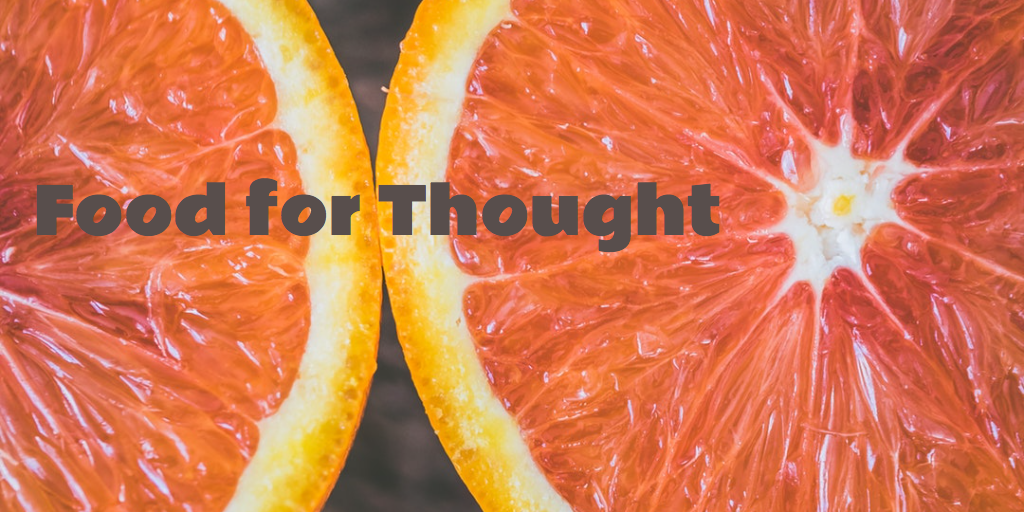| Ashley Parsons |
Up until 15 years ago, my food choices were haphazard at best. If I wanted McDs, I would stop at a drive through, order a “Number 2” and get blue Powerade as the healthier option. What I ate very much depended on what I was craving at the time. I trusted that the food on the grocery store shelves was nourishing or they wouldn’t put it there, right?
It wasn’t until about 8 years ago that I had to seriously examine my food choices and relationship with food. Looking back, I actually started feeling ill about 12-13 years ago. It started with a weird skin thing that was supposedly harmless. Then I started feeling tired and moody a lot; I figured this was normal for a working mom with a toddler. As the years passed, my fatigue got worse. I developed anxiety, insomnia, and battled a myriad of infections and illnesses. I remember one night, waking up, thinking I cannot survive like this. Doctors ran tests and said I was a little inflamed but other than that, nothing seemed wrong with me. After scouring the internet and self diagnosing, I realized I needed to seriously reconsider and shift how I was eating...
Just as with loved ones, our relationship with food can be complex. Sometimes we experience love, joy, and comfort at mealtime. Other times, we experience anxiety, guilt, and shame. Most of us experience a range of these emotions at one time or another. If our relationship with a loved one ever becomes unhealthy or destructive, we have the choice to end the relationship or try to heal it. Because we depend on food for survival, we are not afforded the option to “break up” with it. Therefore, when the relationship becomes unhealthy or toxic we have two choices: continue on as usual or we can work to heal it.
My journey with food and health led me to become a health coach. I could not believe the impact my food choices had on my health, and I wanted to share this knowledge with others. As I started looking into ways to heal our relationship with food, two terms kept popping up: mindful eating and intuitive eating. At first, I thought they were the same; but, after digging deeper, I came to understand they compliment each other but have some important differences. Both are great ways to become more in tune with your body’s nutritional needs, aware of the influencing factors around your food choices and your emotional connection to food.
The practice of mindful eating is about being fully present at mealtime. In today’s society, we pride ourselves on multitasking. If we can accomplish 2-3 things at one time, why wouldn’t we? This can have a major impact on our digestion. Our body functions in two opposing states: “rest and digest” or “fight or flight”. Back in the day, if a saber tooth tiger was chasing us, it would stimulate our fight-or-flight mode and certain mechanisms in the body would either speed up or slow down. During this process, digestion was turned off so we could use that energy to fight or flee. Now, instead of the saber tooth tiger chasing us, we have a full inbox, a project deadline or we might be juggling multiple carpool destinations. When we try to eat amidst these stressful experiences, our body is unable to break down food to absorb the nutrients.
Mindful eating teaches us to slow down and become more aware of our external and internal environments, without judgement, at mealtime. It is about turning off technology and using all five senses to experience food. We may reflect on the origin of the food and feel gratitude for the people, plants and animals involved in the process to get the food on our plate. If you were involved in WAYfinding a few years ago, you may remember doing a mindful eating exercise with an orange. We observed the orange, we enjoyed the fragrance as we peeled it, we ate it one segment at a time and chewed thoroughly, savoring the experience. When we slow down the process of eating, our bodies are able to secrete more enzymes to more readily digest whatever we are eating. Simply slowing down and intentionally chewing can be so beneficial.
Intuitive eating has a slightly different goal. With intuitive eating we are recognizing and honoring our body’s cues. It is abandoning the diet mentality. Intuitive eating is about exploration with food versus following a set of rules. When I think about intuitive eating, I think about my dog. I notice she is adamant about having food in her bowl by 8:30 am but once its there, she nibbles on it throughout the day. In the summer she eats less, in the winter she eats more. If she is sick she doesn’t eat very much. We were born intuitive eaters but then, very quickly, we are taught to eat on a schedule and eat a certain amount (2oz bottles every 4 hours). Now that we are older, we are bombarded with fad diets and foods created by scientists in a lab. Depending on the decade, certain foods were demonized - fats, carbs, etc. Can you think of some ways your approach to eating may have been shaped by these trends?
Take a moment to reflect on your relationship with food. Is your approach to eating working for you? Could practicing mindful eating or intuitive eating help you bring more joy to your dining experience? Every person’s journey with food is completely unique. Healing our relationship with food requires an abundance of patience, grace and forgiveness. Start slow and take it meal by meal.
After traversing the country from west coast to east, Ashley met her husband in Chicago and settled in Indianapolis in 2008 to raise their two children. Ashley grew up in a household where only the occasional Sunday was spent at the nondenominational church nearby. It was after taking a world religions course at UC Santa Cruz that a new curiosity for spirituality and faith was sparked. WAYfinding has been a place where Ashley can openly discuss her questions, while learning ways to introduce her children to the fascinating exploration of faith. Ashley is a certified Integrative Nutrition Health Coach through Institute of Integrative Nutrition and co-owner of Stepping Stone Health in Indianapolis. In her free time, Ashley enjoys practicing yoga and spending time outdoors with her family.


